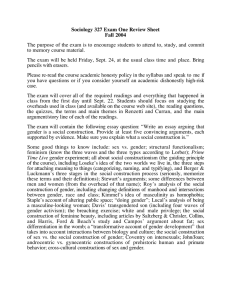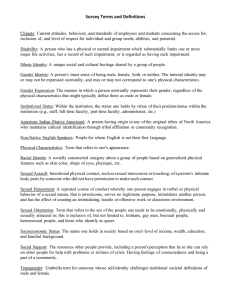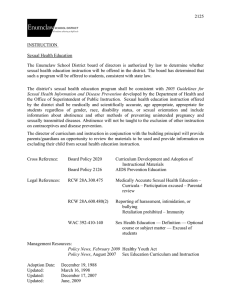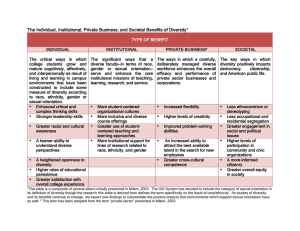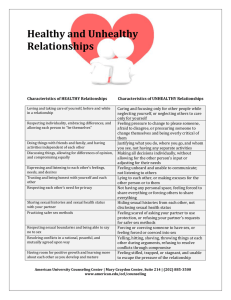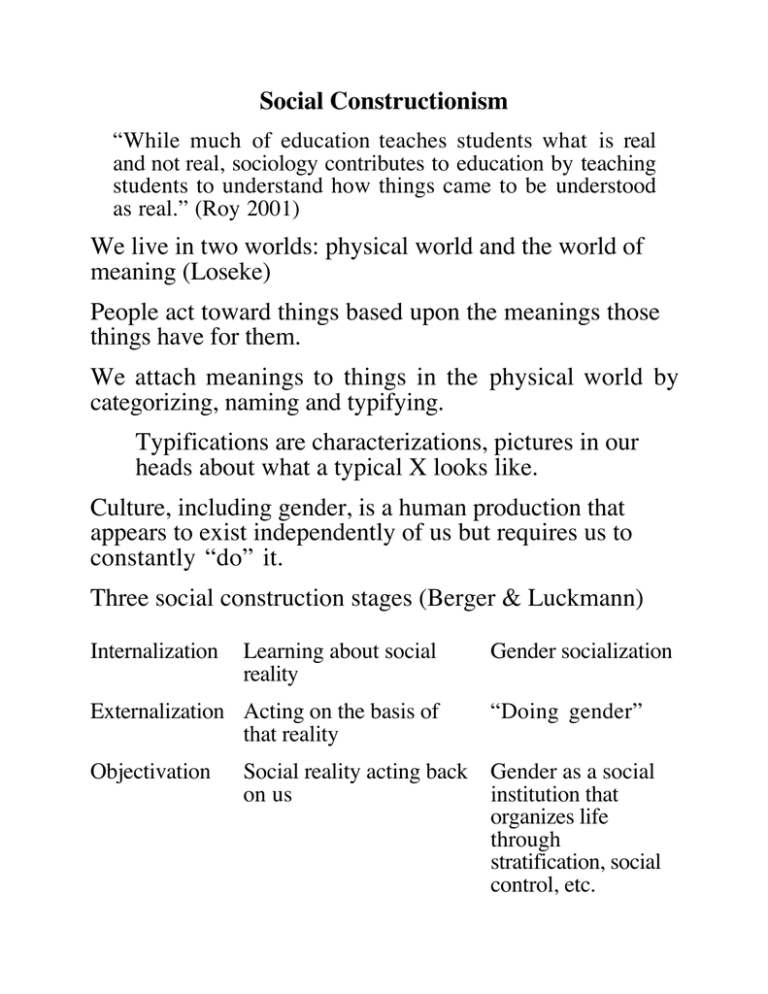
Social Constructionism
“While much of education teaches students what is real
and not real, sociology contributes to education by teaching
students to understand how things came to be understood
as real.” (Roy 2001)
We live in two worlds: physical world and the world of
meaning (Loseke)
People act toward things based upon the meanings those
things have for them.
We attach meanings to things in the physical world by
categorizing, naming and typifying.
Typifications are characterizations, pictures in our
heads about what a typical X looks like.
Culture, including gender, is a human production that
appears to exist independently of us but requires us to
constantly “do” it.
Three social construction stages (Berger & Luckmann)
Internalization
Learning about social
reality
Externalization Acting on the basis of
that reality
Objectivation
Gender socialization
“Doing gender”
Social reality acting back Gender as a social
on us
institution that
organizes life
through
stratification, social
control, etc.
Some socially constructed categories
Colors
Animals (food, pets, endangered, vermin, etc.)
Time (weeks, linear, cyclical, clock time, time as commodity)
Social problems (e.g., domestic violence, stalking, sexual
harassment, acquaintance rape)
People
Races (white, black, Asian, American Indian, etc.)
Sexes (women, men, etc.)
Moral/legal/medical labels
Juvenile delinquent, gifted, felon, sexual predator, mentally
ill, sinner, pardoned
Sexual orientations (e.g., heterosexual, gay, lesbian, etc.)
Types of women as characterized by college men (Gilmore)
Sluts, teases, bitches, good girls

